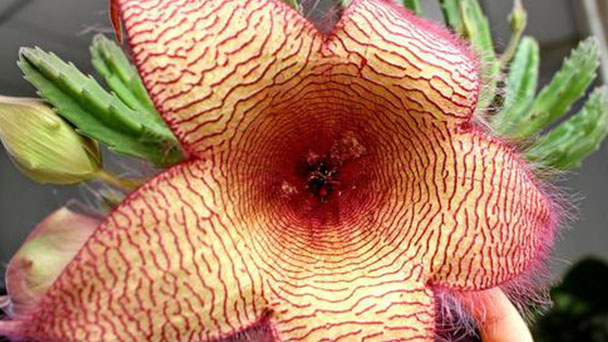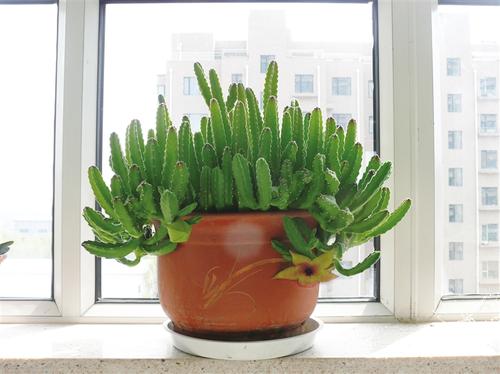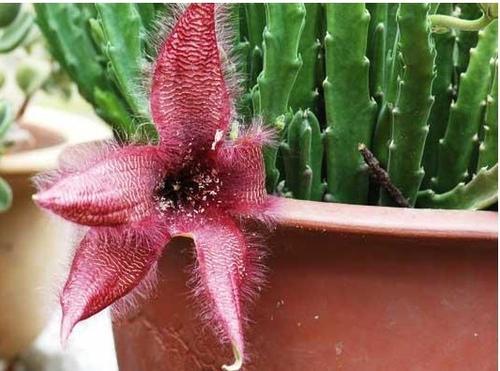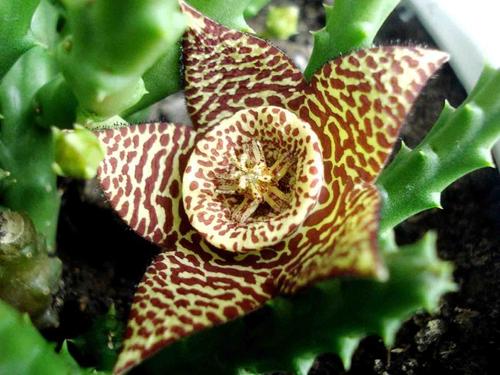Zulu Giant Plant Care
Written by Maggie
Oct 14 2021

Succulents, in the hearts of flower friends are lovely, but did you know that there is a succulent plant called the Zulu giant plant? Zulu Giant plant is a descendant, which lures flies to pollinate with its stench. This is a unique plant in the succulent plant. Today we will get to know How to care for Zulu giant plant!

Zulu Giant Plant Care Tips
Optimum growing time: dividing plants usually in early spring combined with changing pots;Cuttings are available at any time;
Best growing soil: Zulu Giant plant is best for fertile sandy soil with good drainage.
Growth humidity requirements: zulu giant requires dry air and enhanced ventilation in summer;
Optimum growth temperature: Zulu Giant plant likes warm, and the optimal growth temperature is 12 ~ 22°C. Zulu giant plant is not cold resistant, and in winter, temperature should be maintained above 8°C. Zulu giant does not bear intense heat, the plant grows slowly or stops growing when high temperature. In addition to strengthen ventilation and shading outside, often spray water to the plant and all around even, in order to reduce temperature.;
Optimum Growth Light: zulu giant plant likes sufficient light and is tolerant to semi-shade. Sufficient sunshine should be provided in autumn, winter and spring. Avoid strong light exposure, otherwise the plant is easy to burn and atrophy. When the sun is strong, fleshy stems appear red, and can be restored to normal after being moved to the shade. From May to September, when the temperature is high and the light is strong, shade should be given, or plants should be placed in a place with sufficient scattered light.
Zulu Giant Plant Care
Fertilizeing care
Spring is the most vigorous growth period for Zulu Giant plant, and fertilizer and water should be fully supplied. Nitrogen, phosphate and potassium fertilizer should be applied once every half month. Fertilizer should be stopped in summer when the temperature is high, or only thin fertilizer should be applied. After autumn, the plants have entered a period of rapid growth. Fertilizer should be applied every half month, but nitrogen fertilizer should be stopped and potash fertilizer should be applied only, which can not only promote the differentiation and flowering of flower buds, but also improve the cold resistance of the plants. Plant enters dormancy in winter, and we should stop fertilizing. Hornhorn crowns in cultivation should not be too full of fat and water, otherwise there will be a "return to the ancestor" phenomenon, long columnar fleshy stem.
Watering care
Zulu Giant plant is drought-tolerant and prefers dry soils due to its fleshy stems. In spring, autumn growth period, watering should master "dry and wet and partial dry", to prevent basin soil too wet. However, it should not be too dry, otherwise the stem will shrivel and lose its ornamental value. In summer high temperatures, we should pay attention to avoid excessive watering, high temperature and basin soil that is too wet easily leads to rotten roots. We can spray instead of pouring the method to maintain appropriate water. In winter, water conservation should be controlled and dry soil in the basin should be maintained.

Trimming care
Although the flowers of the Zulu Giant plant are large and peculiar, they will give off a bad smell when they bloom. If they are placed in a room, they should be moved to the outside when they bloom, or the buds should be removed. Because the root system is shallow, it is easy to produce lodging, so it should pay attention to support when planting. Horn crown in the growth of the phenomenon of "atavism" and long columnar fleshy stem should be cut off as soon as possible, in order to maintain the beauty of the plant shape.
Basin soil care
Turns the pot every 2 to 3 years, preferably in spring and fall. The basin soil needs to be fertile and loose with good drainage, otherwise the root is easy to rot. The substrate can be made up of leaf rot soil, garden soil, peat soil and plain sand. Because the root system is shallow, we can use shallow potted seed. Years of plants growth will become weak, and they should be eliminated and renewed.
Zulu Giant Plant Propagation
Zulu Giant's propagation methods include cuttings, sowing and planting. Cutting propagation is mainly used.
Cutting: Spring, autumn. Cut the stout stem from the mother plant and make cuttings about 10 cm long. Place the ventilated place for 2 ~ 3 days, and insert the matrix after the wound is dry. After insertion, keep the temperature at 20~25°C and root for 10~15 days. The new plant grows quickly and grows into a thicker cluster that year. The horn crown of rhinoceros rhinoceros is also propagated by cutting the abnormal stem into several pieces, which are dried and then propagated.
Sowing: April to May. Because the seed is large, it is appropriate to sow in the pot on demand. The optimum temperature for germination was 25 ~ 28°C, and germinated 5 ~ 6 days after sowing.
Planting: It is carried out when turning the pot in spring. The tufted plants from the base part of the open, after a little dry, root can be directly on the pot, rootless cuttings.
Zulu Giant Pest Control
Zulu Giant plant is affected by stem rot, black spot and mealworms.

Latest Updated
- Benefits of Bugleweed - 7 Science-backed Health Benefits
- Bugleweed Dangers & Side Effects - Is It Poisonous?
- How to Plant Evergreen Trees - What You Should Know
- When to Plant Evergreens - Grow Guide for Evergreen Trees
- 12 Wonderful Evergreen Shrubs for Your Garden
- 12 Popular Evergreen Plants with Pictures for Beginners
- When And How To Prune A Lilac Bush Like a Pro
- How to Grow & Care for Lilac Vine (Hardenbergia Violacea)
- Japanese Lilac Tree (Syringa Reticulata) Care & Propagation Guide
- Shumard Oak Pros and Cons - What to Know
Popular Articles
- Winter maintenance of Antirrhinum Majus
- How to Grow Terminalia Mantaly Tree
- How to Grow and Care for Crossostephium Chinense
- How to grow Antirrhinum Majus in spring
- Peristeria Elata (Dove Orchid) Profile: Info & Care Guide
- Underwatered Snake Plant (Sansevieria Trifasciata) - Signs And How To Fix
- How to Care for Brazilian Jasmine Plant (Mandevilla Sanderi)
- How to Grow & Care for Graptopetalum Purple Delight in Summer
- Rosa Chinensis (China Rose): Plant Growing & Care Tips
- How to Care for Baby Sun Rose (Aptenia Cordifolia)